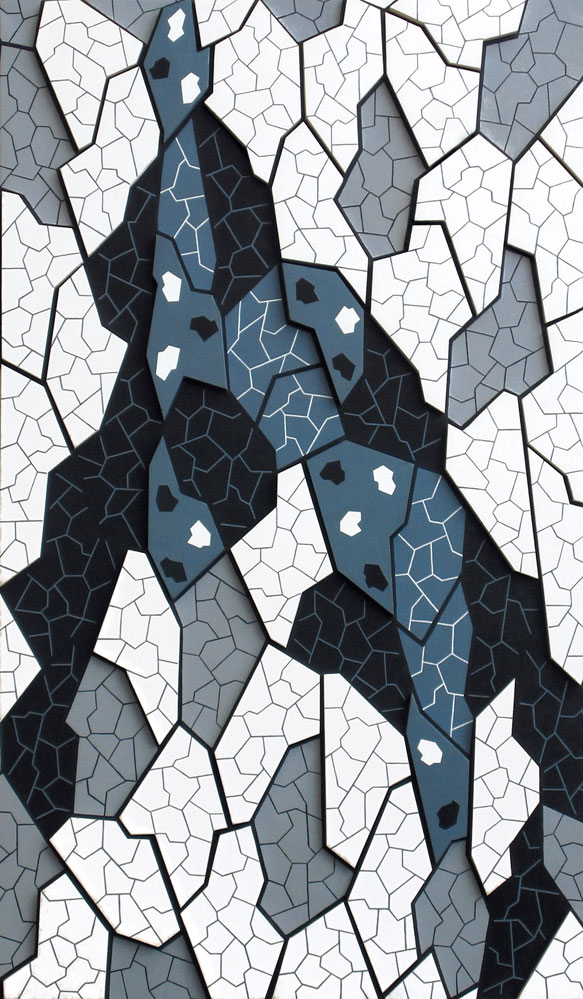LA FRACTALITÉ DANS L'ART CONTEMPORAIN

Avec Jean-Claude Meynard, les peintures sont des images de labyrinthes auto-similaires, linéaires, indifférentes à l’échelle. L’artiste se concentre sur une sorte d’auto-similarité perfectionnée, précise et calculée, telle que nous la rencontrerions dans un cristal.
Meynard cherche à explorer la topographie complexe de la fracturation car celle-ci permet, d’après lui, une nouvelle lecture de l’image. La lecture fractale d’une œuvre donne au spectateur la possibilité de confronter les images entre elles à différentes échelles, chacune de celle-ci correspondant à un niveau distinct de la réalité, l’image pouvant se répliquer à l’infini.

Entre puzzle et labyrinthe, les images de Meynard se métamorphosent, rendant ainsi impossible toute lecture univoque du travail. Elles marquent leur affinité avec les dimensions intermédiaires qui existent. À la fois topographiques et formelles, ses œuvres sont des métaphores de l’état mental de l’artiste confronté à lui-même. Elles sont des représentations de la fractalité de l’esprit avec sa capacité à se fissurer, se briser et se déformer avant de se reformer dans un nouvel état.
Le travail de Meynard reflète l’idée de l’individu comme dynamique hermétique, celui-ci étant dépeint comme une continuité dans tous les états, le turbulent et le statique, l’état humain où l’extase et le désespoir coexistent et permutent entre eux.
Susan Condé - 2001
Extrait de La Fractalité dans l’art contemporain
Ed. La Différence, Paris

With Jean-Claude Meynard, paintings are images of self-similar, linear labyrinths, regardless of scale. The artist concentrates on a kind of perfected, precise and calculated self-similarity, as one would find in a crystal. Meynard aims at exploring a complex topography of fracturation since, in his view, it allows for a new reading of the image. The fractal reading of a work gives the spectator the possibility of confronting images with one another at different levels, each of these corresponding to a distinct level of reality, since the image can be reproduced an infinite number of times.
Between puzzle and labyrinth, Meynard’s images undergo a metamorphosis, thus making any single reading of the work impossible. They signal their affinity with existing intermediary dimensions. Both topographical and formal, his works are metaphors of the mental state of the artist confronting himself. These are representations of the fractality of the mind and its capacity for fissuring, shattering and being deformed before re-forming itself into a new state. Meynard’s work reflects the idea of the individual as a hermetic dynamics, one depicted as a continuity in all its states, turbulent and static, and the human state or condition where ecstasy and despair co-exist and permute, interchanging with one another.
